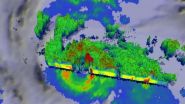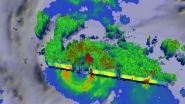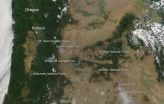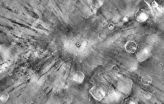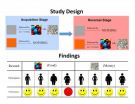(Press-News.org) Typhoon Rammasun passed through the central Philippines overnight and NASA satellite imagery showed that the storm's center moved into the South China Sea. NASA's TRMM satellite showed the soaking rains that Rammasun brought to the Philippines as it tracked from east to west.
Before Rammasun made landfall, the Tropical Rainfall Measuring Mission or TRMM satellite passed over the storm and measured cloud heights and rainfall rates. On July 14, 2014 at 18:19 UTC (2:19 p.m. EDT), TRMM spotted powerful, high thunderstorms reaching heights of almost 17km (10.5 miles). Rain was measured falling at a rate of almost 102 mm (about 4 inches) per hour and that heavy rainfall continued as Rammasun made landfall in the central Philippines.
Rammasun made landfall near Legazpi City on July 15. Legazpi is the capital city of the province of Albay in the Philippines, located on the east coast.
On July 16, 2014 at 02:40 UTC (July 15 at 10:40 p.m. EDT) Typhoon Rammasun had already crossed the Philippines and entered the South China Sea when NASA's Terra satellite passed overhead. The Moderate Resolution Imaging Spectroradiometer or MODIS instrument provides high-resolution imagery and captured Rammasun after it moved west of Manila. The eye of the typhoon had become obscured by clouds and was not apparent in the MODIS image. The typhoon also appeared somewhat elongated in a west-to-east direction.
VIDEO:
NASA's TRMM satellite flew over on July 14, 2014 at 1819 UTC and data was used to make this 3-D flyby showing thunderstorms to heights of almost 17km (10.5 miles)....
Click here for more information.
On July 16 at 09:00 UTC (5 a.m. EDT), Typhoon Rammasun's maximum sustained winds were near 80 knots (92.0 mph/148.2 kph). The center was in the South China Sea, near 15.4 north latitude and 118.5 east longitude. It was about 114 nautical miles west-northwest of Manila and was moving to the northwest at 15 knots (17.2 mph/27.7 kph). The Joint Typhoon Warning Center expects Rammasun to strengthen to 105 knots (120.8 mph/194.5 kph) by July 18 before weakening again.
Typhoon Rammasun is expected to pass north of Hainan Island, China on July 18 around 0600 UTC (2 a.m. EDT). As a result, China Meteorological Administration (CMA) noted that Typhoon standby signal No 1 is expected to be raised today, July 16 as Typhoon Rammasun is expected to pass within about 500 miles (~ 800 kilometers) from Hong Kong. For current watches and warnings from CMA, visit: http://www.cma.gov.cn/en/WeatherWarnings/ActiveWarnings/201407/t20140716_252541.html.
The CMA expects Rammasun to approach the coastal area of eastern Hainan Island to western Guangxi on the mainland. Rammasun is forecast to make its next landfall at Lingshui, Hainan Island, and then in Yangjiang of the Guangdong Province of mainland China, early (local time) on July 18.
INFORMATION:
Text credit: Rob Gutro
NASA's Goddard Space Flight Center
NASA sees Typhoon Rammasun exit the Philippines
2014-07-16
ELSE PRESS RELEASES FROM THIS DATE:
Researchers demonstrate health risks posed by 'third hand' tobacco smoke
2014-07-16
Research led by the University of York has highlighted the potential cancer risk in non-smokers – particularly young children – of tobacco smoke gases and particles deposited to surfaces and dust in the home.
Until now, the risks of this exposure known as 'third hand tobacco smoke' have been highly uncertain and not considered in public policy.
However, a new study published in the journal Environment International, has estimated for the first time the potential cancer risk by age group through non-dietary ingestion and dermal exposure to third hand smoke. The results ...
Squid skin protein could improve biomedical technologies, UCI study shows
2014-07-16
Irvine, Calif., July 16, 2014 – The common pencil squid (Loliginidae) may hold the key to a new generation of medical technologies that could communicate more directly with the human body. UC Irvine materials science researchers have discovered that reflectin, a protein in the tentacled creature's skin, can conduct positive electrical charges, or protons, making it a promising material for building biologically inspired devices.
Currently, products such as retinal implants, nerve stimulators and pacemakers rely on electrons – particles with negative charges – to transmit ...
National Psoriasis Foundation awards $1.05 million in research grants
2014-07-16
PORTLAND, Ore. (July 16, 2014)—Thirteen scientists received a total of $1.05 million in funding from the National Psoriasis Foundation for projects that aim to identify new treatments and a cure for psoriasis—an autoimmune disease that appears on the skin, affecting 7.5 million Americans—and psoriatic arthritis—an inflammatory arthritis that affects the joints and tendons, occurring in up to 30 percent of people with psoriasis.
Learn more about the NPF research grant program: http://www.psoriasis.org/research.
This year, three scientists each received a two-year, $200,000 ...
70-foot-long, 52-ton concrete bridge survives series of simulated earthquakes
2014-07-16
VIDEO:
A 70-foot-long, 52-ton concrete bridge survived a series of earthquakes in the first multiple-shake-table experiment in the University of Nevada, Reno's new Earthquake Engineering Lab, the newest addition to the...
Click here for more information.
RENO, Nev. – A 70-foot-long, 52-ton concrete bridge survived a series of earthquakes in the first multiple-shake-table experiment in the University of Nevada, Reno's new Earthquake Engineering Lab, the newest addition to the ...
Dozens of fires plague Oregon
2014-07-16
Fires are a way of life during the hot, dry summer days, but that does not mean they are ever taken for granted. Thousands of lightning strikes Sunday (7/13) and early Monday (7/14) probably started most of the wildfires, which are burning on private, public and reservation land. Dozens of fires are plaguing the forest areas in the state of Oregon. In this image, are shown the Buzzard Fire, the Shaniko Butte fire, the Bridge 99 Complex fire, and the Saddle Draw Fire.
The Buzzard Complex fire began as a lightning strike. Difficult terrain, combined with extremely dry ...
Arizona State University, US Geological Survey project yields sharpest map of Mars surface properties
2014-07-16
Tempe, Ariz. -- A heat-sensing camera designed at Arizona State University has provided data to create the most detailed global map yet made of Martian surface properties.
The map uses data from the Thermal Emission Imaging System (THEMIS), a nine-band visual and infrared camera on NASA's Mars Odyssey orbiter. A version of the map optimized for scientific researchers is available at the U.S. Geological Survey (USGS).
The new Mars map was developed by the Geological Survey's Robin Fergason at the USGS Astrogeology Science Center in Flagstaff, Ariz., in collaboration ...
Organismal biologists needed to interpret new trees of life
2014-07-16
Rapidly accumulating data on the molecular sequences of animal genes are overturning some standard zoological narratives about how major animal groups evolved. The turmoil means that biologists should adopt guidelines to ensure that their evolutionary scenarios remain consistent with new information—which a surprising number of scenarios are not, according to a critical overview article to be published in the August issue of BioScience and now available with Advance Access.
The article, by Ronald A Jenner of the Natural History Museum in London, describes how evolutionary ...
When it comes to food, obese women's learning is impaired
2014-07-16
Obese women were better able to identify cues that predict monetary rewards than those that predict food rewards, according to a study by Yale School of Medicine researchers and their colleagues in the journal Current Biology. The findings could result in specific behavioral interventions to treat obesity.
"Instead of focusing on reactions to the food itself, such interventions could focus on modifying the way in which obese individuals learn about the environment and about cues predicting food rewards," said lead author Ifat Levy, assistant professor of comparative medicine ...
Oregon study details brain pathways linking visual function, running
2014-07-16
EUGENE, Ore. – (July 16, 2014) – A new study by researchers at the University of Oregon published today in the journal Neuron describes a brainstem circuit in mice that may help explain how active movement impacts the way the brain processes sensory information.
"Previous studies have examined changes in the visual cortex of mice during running. What was unknown was how do running and vision get linked together in the first place?" said Cristopher Niell, a biology professor in the Institute of Neuroscience and the senior author on the paper "Identification of a Brainstem ...
Efficient structures help build a sustainable future
2014-07-16
CORAL GABLES, Fla. (July 14, 2014) -- When envisioning a new structure, engineers often have to balance design choices against the environmental impact of materials used. It is estimated that 40 to 50 percent of greenhouse gases are produced by the construction industry, according to the California Integrated Waste Management Board. Lessening the impact of construction on the environment is a work in progress.
Researchers at the University of Miami (UM) and the University of Milwaukee School of Engineering are searching for designs and materials that are less harmful ...
